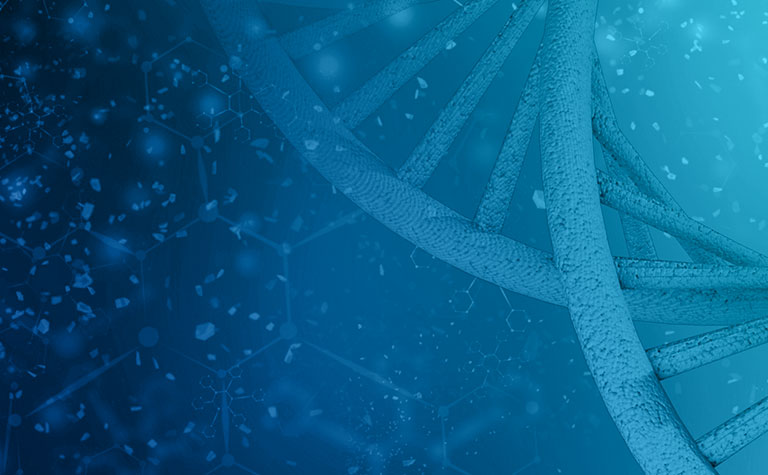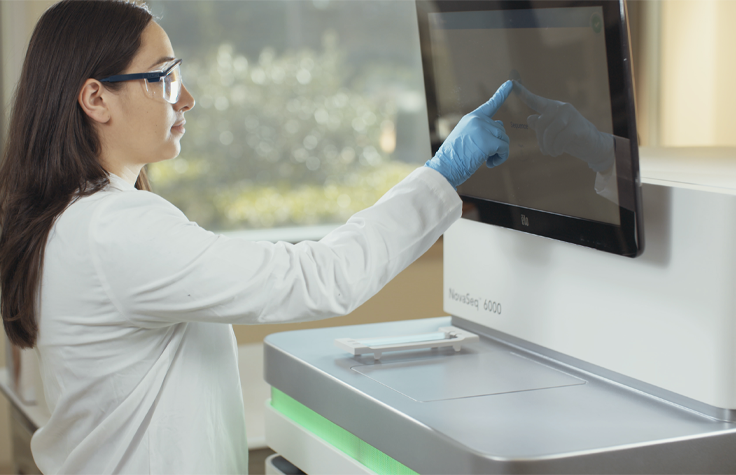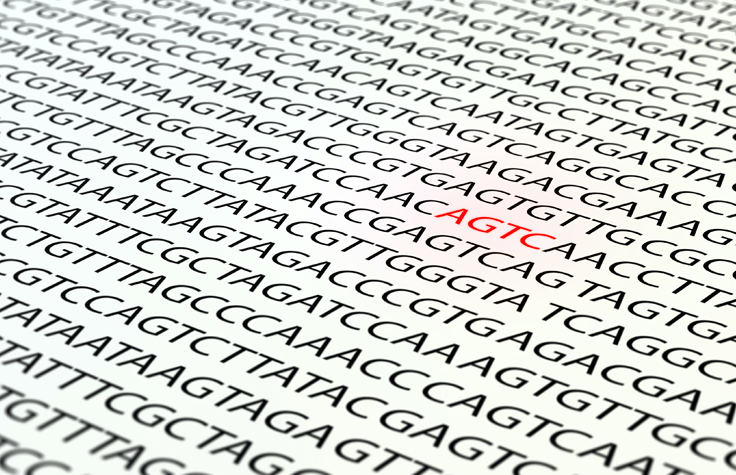Cancer Whole-Genome Sequencing

Genome-wide comparisons of cancer vs matched normal DNA with WGS
Cancer whole-genome sequencing (WGS) with next-generation sequencing (NGS) provides a base-by-base view of the unique mutations present in cancer tissues. It enables the discovery of novel cancer-associated variants, including single nucleotide variants (SNVs), copy number changes, insertions/deletions (indels), and structural variants. Many cancer-associated variants have been discovered using cancer genome sequencing. WGS also provides a comprehensive view of genomic changes in cancer DNA samples compared to normal DNA.
Cancer genomes typically contain unpredictable numbers of point mutations, fusions, and other aberrations. Since many of these alterations may be novel and not reside in coding regions, cancer WGS offers the most comprehensive approach for variant identification. In contrast, targeted approaches like exome sequencing may miss specific variants, such as those outside coding regions.

Benefits of WGS over targeted molecular panels in cancer research
- Assesses the full genomic backbone of an organism or tissue for unbiased analysis and potential discovery of novel cancer-associated genes
- Detects genomic signatures that may not yet be linked to cancer phenotypes
- Discovers non-coding regions of the genome that may influence cancer progression
- Uncovers genome-wide integration sites of oncogenic viruses
Cancer whole-genome sequencing workflow
Illumina offers library preparation, sequencing, and data analysis options for cancer whole-genome sequencing and tumor-normal comparisons. Streamlined library prep workflows and flexible kit configurations accommodate multiple study designs.
Library prep
Illumina DNA Prep
A fast, integrated workflow for a wide range of applications, from human whole-genome sequencing to amplicons, plasmids, and microbial species.
Illumina DNA PCR-Free Prep
A high-performing, fast, and integrated workflow for sensitive applications such as tumor-normal variant identification or human whole-genome sequencing.
Sequencing
NovaSeq X Series
The NovaSeq X Series offers vast application breadth, enabling data-intensive methods at production scale.
NovaSeq 6000 System
Scalable throughput and flexibility for virtually any genome, sequencing method, and scale of project.
Data analysis
Illumina DRAGEN Secondary Analysis
Accurate, ultra-rapid analysis of NGS data from whole genomes, with apps for germline and somatic data. Available on-premise or in BaseSpace Sequence Hub.
DRAGEN Somatic Pipeline
The DRAGEN Somatic Pipeline aligns and variant calls Tumor-only or Tumor/Normal FASTQ files, outputting BAM(s) and a VCF.
Illumina Connected Analytics
A secure genomic data platform to operationalize informatics and drive scientific insights.
BaseSpace Sequence Hub
The Illumina genomics computing environment for NGS data analysis and management.
Correlation Engine
A growing library of curated genomic data to support researchers identifying disease mechanisms, drug targets, and prognostic or predictive biomarkers.
Tumor-normal sequencing
Through tumor-normal whole-genome sequencing, researchers can compare tumor mutations to a matched normal sample. Tumor-normal comparisons are crucial for identifying the somatic variants that act as driver mutations in cancer progression.
Illumina offers push-button tools to facilitate analysis of tumor-normal WGS data.
Learn more about:
- DRAGEN Secondary Analysis: Accurate, ultra-rapid analysis of WGS data and other NGS data, on-premise or in the cloud, with somatic, germline, and other app options
- DRAGEN Somatic Pipeline: This pipeline includes tumor-only and tumor–normal modes, designed for detecting somatic variants in tumor samples. Both modes make no ploidy assumptions, enabling detection of low-frequency alleles.
- BaseSpace Sequence Hub: An economical and powerful cloud computing environment to manage, analyze, and share NGS data.
Population-based metrics to stratify somatic variant calling performance
This research article outlines a method that empirically defines regions of the genome with systematically high or low quality in a cohort of samples and its application for cancer variant calling in WGS data.
Read articleCharacterizing the non-coding cancer genome
This on-demand webinar discusses detecting mutations in non-coding regions and the effects of these alterations using functional genomics methods. This webinar also covers integration of DNA sequencing with other techniques, such as RNA sequencing and ATAC-seq, to evaluate transcriptomic and epigenomic features.

Featured cancer WGS research findings
The growing case for WGS in blood cancer
Learn about a study evaluating the analytical performance of WGS in identifying somatic small variants, structural variants (SV), and copy number alterations (CNA) specific to acute myeloid leukemia (AML). The research findings demonstrate how WGS provides a comprehensive genomic characterization of blood cancer samples.
Read articleApplications of WGS for hematologic cancers
Research on myeloid and lymphoid cancers indicates that WGS can detect chromosomal changes, structural variants, and cryptic mutations that may be missed by traditional methods like cytogenetics and FISH. View data and read a summary of the study findings.
Read articleRelated cancer research resources
Cancer Research Guide
The Cancer Research Guide is a 40+ page comprehensive resource covering cancer research topics, sequencing methods, solutions, and more.
NEJM study shows whole-genome sequencing improves molecular profiling
Side-by-side comparison shows WGS produced more accurate results in less time and at a similar cost than other standard techniques.
Shining a light on cancer of unknown primary
How whole-genome sequencing brings hope for awareness, education, and research on cancer of unknown primary (CUP).
Genomics and transcriptomics basics
Download the infographic to learn the basics of genome and transcriptome sequencing at a glance.
Sequencing DNA and RNA from the same sample
Watch the new in-lab quick start video to learn how to prepare high quality DNA and RNA samples for multiomic sequencing.
Advancing cancer research with multiomics
Learn how to link the causes and consequences of complex phenotypes through multiomics to enable discoveries that weren’t possible before.